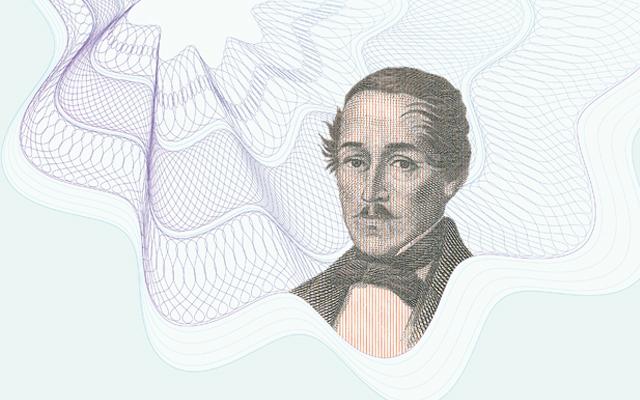At some point in life, we become collectors, for many, stamps are the obvious draw, for others, its baseball cards and comics. Ranked among the most popular collectibles is currency, from rare coins to old banknotes, many from countries that have witnessed profound political and social upheaval.
In Colombia, the national currency has also undergone important changes, from physical dimensions to purchasing power. In just two decades, the $100, $200 and $1000 peso bills were pulled from circulation and replaced by coins, and more recently, in 2017, the Central Bank – Banco de la República – introduced its highest denomination, the $100,000 peso depicting President Carlos Lleras Restrepo.
The changing face of money – and there are many on the notes including Nobel Laureate Gabriel García Márquez with the $50,0000 – is the subject of a new exhibition by the Banco de La República titled La Primera Impresión (The First Impression), and housed in an appropriate edifice: the Old Mint.
The story of the Central Bank’s printing press dates back 60 years and visitors to La Primera Impresión can appreciate the symbols and personalities that have graced the nation’s banknotes, including representative artworks, landmarks, and biodiversity. One of the bills many fondly still remember is the $10,000 pesos of 1992, which depicts an Embera Woman, and on the reverse side, tropical birds and a 1507 map of the German cartographer Martin Waldseemüller.
In Colombia, the first printing press belonged to the Society of Jesus and operated from 1738 to 1767 in Cartagena. In 1777, the Royal Press moved to Santa Fe, and by the end of the 19th century first attempts were made with newspaper printing. In 1894, the official government printing press was established.
The Second World War played an important role in the way Colombian banknotes were produced, as printing materials from Europe were scarce and designs contracted to overseas banks made reference to aspects of the country, but did not reflect cultural and ethnic diversity. This foreign dependency forced the Banco de la República to act local, and in 1955 a small printing workshop was established. The first denominations to come of the press were the $1, $5, $10 and 20 peso notes and featured iconic gold artifacts from the bank’s gold collection.
From its modern facility on the Avenida El Dorado, the Banco de la República continues its printing tradition with notes made from 100% cotton fiber, and that incorporate sophisticated security features.
Technological innovation has not come, however, at the expense of creativity, and the introduction of the new family in 2017 also recognizes the important role of women in shaping the country’s scientific, educational and artistic future, among them painter Débora Arango and researcher Virginia Gutiérrez
Even though it is never too late to start collecting currencies, the exhibit First Impression shows how Colombia, since the dawn of the modern printing age, has democratized its money by putting accomplished citizens on the face of currency rather than politicians, while on the reverse side of both bills and coins, celebrating another bountiful resource: its many natural wonders.
La Primera Impresión – Casa de Moneda. Calle 11 No. 4-93.
Until March 2020. Free admission. (Closed Tuesday).

